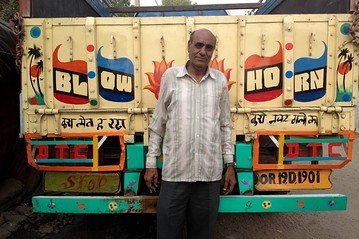Quiet? Seriously? India’s Quixotic Campaign to Stop Honking

“Be careful while pasting the sticker,” Mr. Kalra cautioned. “Make sure it’s not crooked.”
In a matter of seconds, a gaggle of anti-honking crusaders, led by Mr. Kalra, surrounded the puzzled driver, to brief him on the do’s and don’ts of honking. A big no-no? To hit the horn in frustration at a red light—something that happens all the time in the Indian capital.
“Here people blow the horn for no reason. It’s like a sickness,” says Mr. Kalra, who quit his job as a martial-arts trainer with Delhi’s police to start a nongovernmental organization that, among other things, campaigns against honking.
Persuading Indians to stop tooting is an ambitious mission: Everyone is at it night and day—from drivers of the motorized three-wheelers called auto-rickshaws to chauffeurs of the city’s ultrarich.
Motorcycles beep nonstop as they zigzag their way through Delhi’s chaotic traffic. “They are the worst,” says Mr. Kalra, 44 years old, who says he hasn’t honked a single time since he first started driving, 25 years ago.
On roads where drivers pass on the inside lane, rarely using turn signals, even those who are opposed to honking find it hard to do without it.
Some foreign car makers even make allowances for India’s claxon craze, fitting vehicles for the local market with different horns. “The traffic conditions are different here, you have all kinds of people on the roads,” says Arvind Saxena, managing director of Volkswagen AG’s India unit. In the West, horns “are much softer and rarely used,” he says.
In India, Volkswagen fits its cars with electromechanical horns, which Mr. Saxena says are “slightly louder and last longer” than electronic horns, commonly used in the West.
For a growing number of people in India who have experienced the relative quiet of other cities, the noise has become unbearable.
Related News


